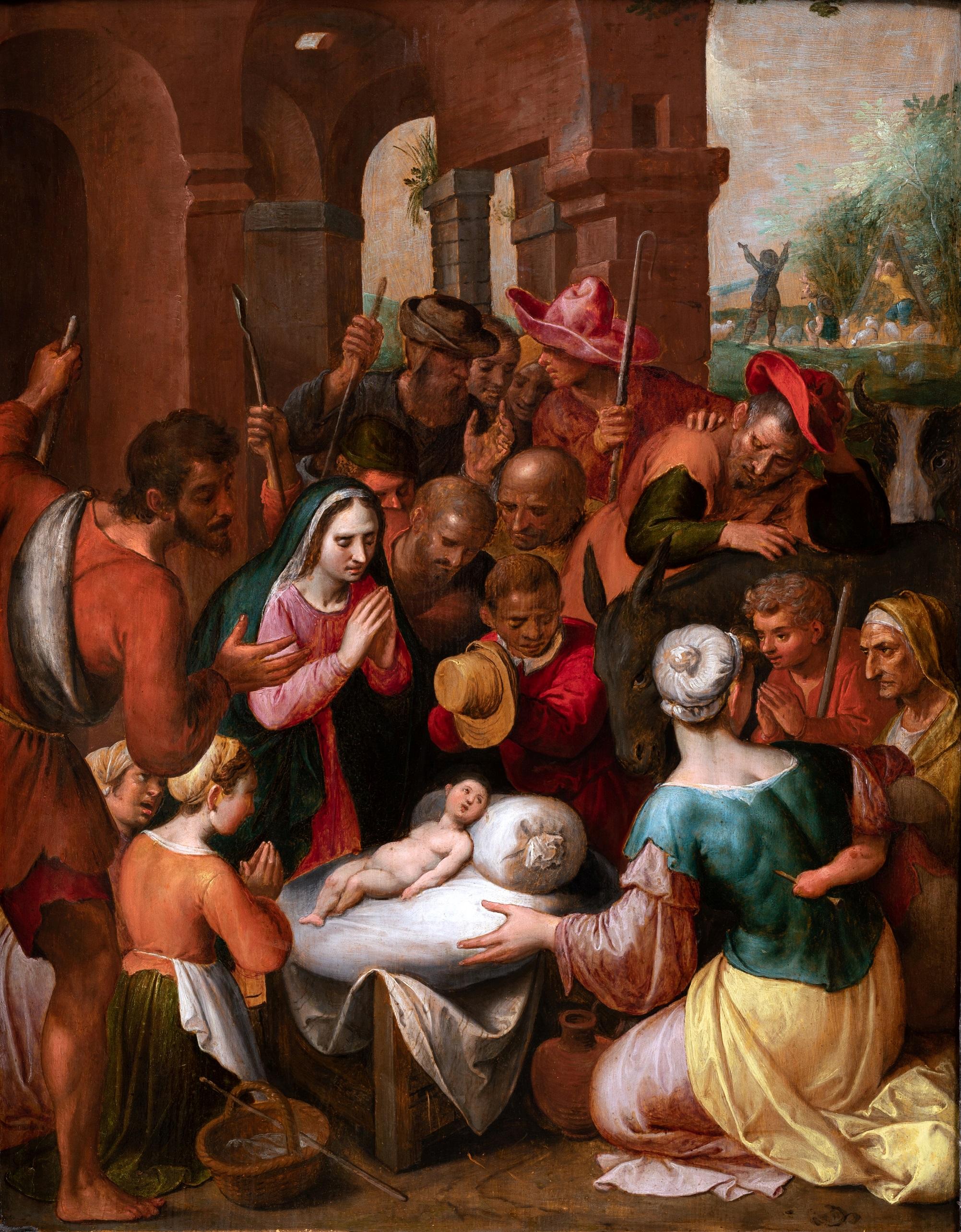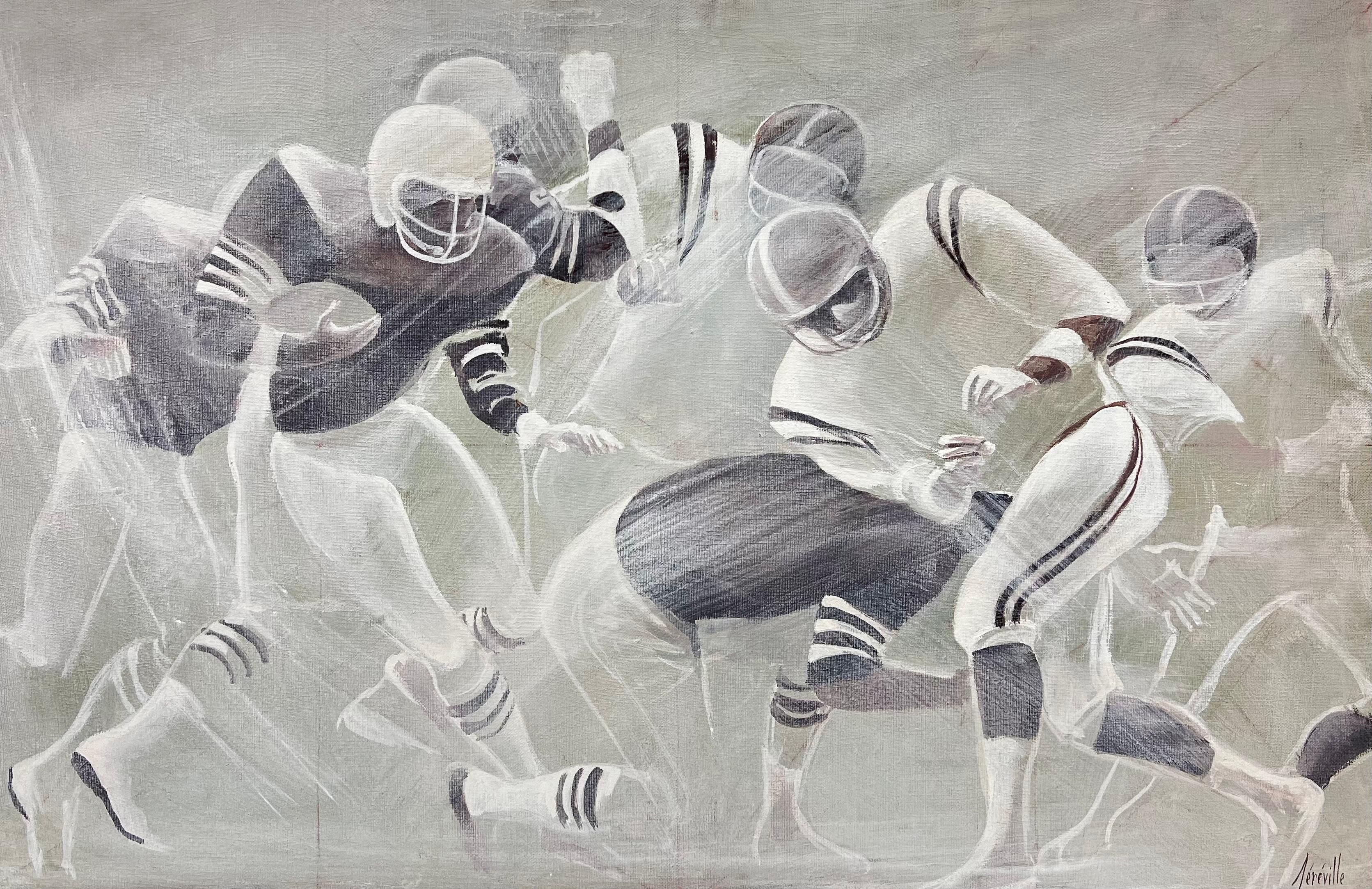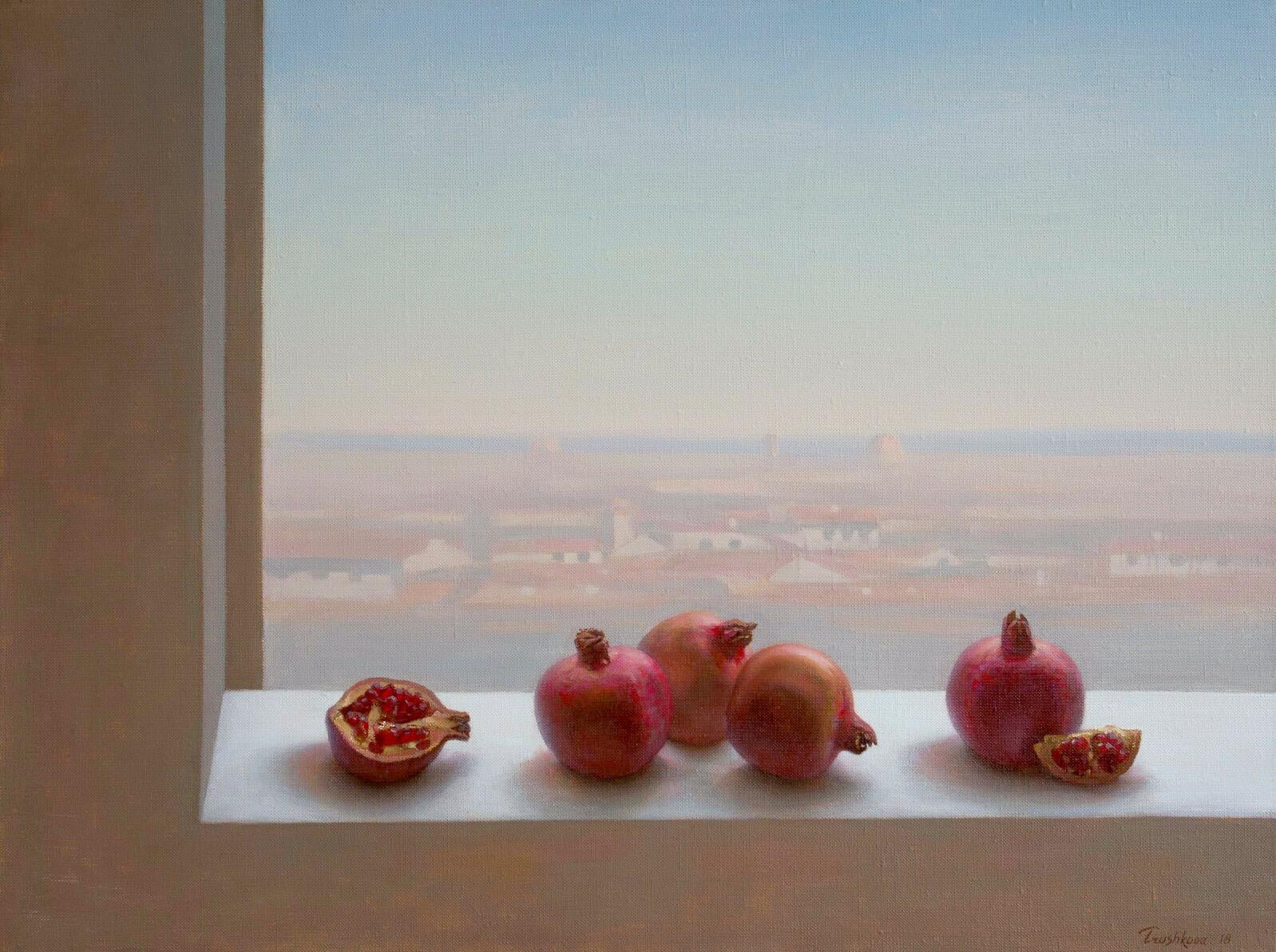Items Similar to Group of Four Paintings with Scenes from Orlando Furioso, XVIIIth century
Want more images or videos?
Request additional images or videos from the seller
1 of 17
UnknownGroup of Four Paintings with Scenes from Orlando Furioso, XVIIIth century1700s
1700s
About the Item
Oil painting on canvas. Lombard area of the late 18th century. The four canvases show scenes from Orlando Furioso, the famous epic poem written by Ludovico Ariosto and published for the first time in 1516. On the frame, on the back, there are handwritten writings in ancient Italian, which say the title of the scene and they give the reference of the song and the verse. All four scenes represent episodes taken from the first two songs of the poem and appear to be sequential. The attributive titles are as follows: 1- “This painting represents that Paladin galiardo (Rinaldo) son of Amone sig. di Monte Albano, which describes Ariosto in canto 1 to verse 12 ”: depicts the moment in which Rinaldo, on foot of his horse Baiardo, sees Angelica escaped from the camp of Namo di Baviera in the wood. 2- "This painting represents Angelica and Ferraù when she comes to their aid, which Ariosto describes in canto 1 verse 14": Angelica fleeing from Rinaldo, meets in the woods Ferraù, a noble Saracen knight who is also in love with the girl, who helps to escape by opposing the Christian knight. 3- “This painting represents Rinaldo and Sacripante who fall down, Angelica runs away from their fury. Ariosto describes it in Canto 2 verse 10 ": Rinaldo and Sacripante fight to compete for the love of Angelica, who in the meantime runs away. 4- “This painting represents Rinaldo and Sacripante in the act they fell for Angelica and were stopped by a spirit in the form of a Valletto. Ariosto describes it in canto 2 verse 15 ": while the two knights fight, Angelica meets a hermit, who, with a spell, evokes a spirit with the appearance of a footman, who interrupts the duel between the two contenders. The paintings therefore belong to a single pictorial cycle, attributable to the end of the eighteenth century and which, in accordance with the neoclassical taste, represents the characters in classical clothes - warriors dressed as ancient soldiers, Angelica dressed in a Roman tunic, shoes and bracelet - , but inserted in a landscape of Northern Italy, a shady and dense forest. The Orlando Furioso had the peculiarity of proposing the warlike theme associated with the love one (in particular the love story between Angelica and Medoro was preferred, which became the subject of numerous works by artists of all centuries) and obtained great popularity and success: His representations were numerous in all ranges of visual pictorial art, in stately frescoes, paintings, ceramics, even apothecary jars, cups, medals, pendulums, candelabra. It began in the Emilian land, the homeland of the poem created by Ariosto for Cardinal Ludovico D'Este, to arrive at the Medici courts, in Lombardy, where subsequently Ariosto's pictorial cycles were carried out in numerous palaces and stately homes. The canvases are presented in gilded style frames.
- Creation Year:1700s
- Dimensions:Height: 14.38 in (36.5 cm)Width: 21.86 in (55.5 cm)Depth: 0.99 in (2.5 cm)
- Medium:
- Period:
- Condition:
- Gallery Location:Milan, IT
- Reference Number:1stDibs: LU680310801692
About the Seller
4.8
Gold Seller
These expertly vetted sellers are highly rated and consistently exceed customer expectations.
Established in 2017
1stDibs seller since 2017
102 sales on 1stDibs
Typical response time: 1 hour
- ShippingRetrieving quote...Ships From: Milan, Italy
- Return PolicyA return for this item may be initiated within 14 days of delivery.
More From This SellerView All
- David and Abigail, fourth decade of the 17th centuryLocated in Milan, ITThe painting, done in oil on canvas, depicts the meeting between King David and Abigail, as narrated in the biblical text from the First Book of Samuel (I Samuel 25:1-34). David, left without food in the wilderness with his army, seeks relief from the wealthy Nabal, who contemptuously denies him any help, ungrateful of the benevolence he previously received from the king. Upon hearing the rejection, the ruler intends to take revenge by killing his entire lineage. Abigail, Nabal's beautiful and wise wife, decides to right the wrong and bring David plenty of food and gifts. In the king's presence the woman humbles herself, winning his forgiveness and benevolence. Soon afterwards widowed, she will in fact become his bride. The broad scene depicts the climax of the Old Testament episode, the moment when the woman prostrates herself before David and his servants prepare to deliver the gifts. The biblical event is here a pretext, as is customary in modern-age painting, for staging the colorful description of a sumptuous procession, which can be divided into two parts, almost two wings of a crowd divided specularly: on the left David with his dignitaries and the army; on the other, Abigail's retinue, handmaids, servants leading dromedaries and donkeys laden with food. The crowded group of figures is set in a natural proscenium: above a low horizon, barely hinted at by distant blue mountains, rises on the left side a craggy rocky cliff, the shelter of the army led by the ruler. The 'somatic intonation of the characters, as well as the choice of metallic chromatics and the play of light on the shiny fabrics refer to a clear Flemish matrix, particularly the influence of the frothy and sumptuous painting of Rubens and Van Dyck. As well set forth in the expert report prepared by Professor Giuseppe Sava, the work is to be attributed to Vincent Malò...Category
17th Century Other Art Style Figurative Paintings
MaterialsOil
- Madonna and Child with St. John, c. 1540-1560. Attributed to Carlo PortelliLocated in Milan, ITThe painting features Our Lady holding the Child, who extends his hand toward the wooden cross, the symbol of the future Passion, and St. John. Behind the three figures a rocky mount...Category
18th Century and Earlier Other Art Style Figurative Paintings
MaterialsOil
- The Preaching of St. John the Baptist, Workshop of Fans Francken II, 1600sLocated in Milan, ITThe sermon of the Baptist is set in a large open space, with rich vegetation and wooded glimpses, and on the back, in the distance, you can see the buildings of a city. The scene see...Category
17th Century Other Art Style Figurative Paintings
MaterialsOil
- Madonna Enthroned with Child between angels and saints Nicholas of TolentinoLocated in Milan, ITThe painting features the enthroned Madonna and Child, two praying angels, and Saints Nicholas of Tolentino, Augustine, Luke the Evangelist, and Monica, below an elegant canopy. The ...Category
16th Century Other Art Style Figurative Paintings
MaterialsOil
- Mythological Subject, Italy XVII Century, The Tale of Apollo and MarsyasLocated in Milan, ITOil painting on canvas. Northern Italian school of the seventeenth century. The large canvas derives from an engraving of 1562 by the Venetian Giulio Sanuto, who faithfully reproduce...Category
17th Century Other Art Style Figurative Paintings
MaterialsOil
- Penitent Magdalene and St. John the Baptist, oil on slate, early 17th centuryLocated in Milan, ITThe figure of the Magdalene emerges from the darkness, leaning to follow the curve of the stone support; it is depicted vaulted with an interrogative air towards the dark, as if in an attitude of listening, the left hand raised and the other leaning on the "memento mori" very shortened. In front of her a scourge and the jar of ointment. Painted en pendant, Saint John the Baptist is depicted as a young man, with a lamb at his feet, in his hand the processional cross with the banner "exception agnus dei", while with his right hand he draws from the source of water, recalling the episode that will see Jesus Christ baptized. In both paintings the figures stand out in a strong and incisive way thanks to the black that characterizes the slate plate on which they are depicted. Historical-critical analysis: We are faced with two examples of oil painting on stone. The beginnings of this particular technique are to be placed in the first half of the sixteenth century: after some fifteenth-century experiments it is with Sebastiano del Piombo that the genre takes hold in the sixteenth century. There were different types of support used, also linked to their availability: amethyst, marble in various colors, alabaster and blackboard. The reasons underlying this technical choice refer to Renaissance artistic theories: it is no coincidence that the painter who most often experimented with oil painting on marble...Category
Early 17th Century Other Art Style Figurative Paintings
MaterialsOil
You May Also Like
- French Surrealist Oil Painting Cubist Figurative Scene 20th centuryLocated in Cirencester, GloucestershireFigurative Abstract French School, signed oil painting on board framed: 21.25 x 30.75 inches canvas: 20.5 x 30 inches The painting is in overall good condition, bar an age related pa...Category
20th Century Surrealist Figurative Paintings
MaterialsOil
- Cercle of Ambrosius Francken, Adoration of the shepherds, 17th century AntwerpLocated in PARIS, FRAdoration of the shepherds, Cercle of Ambrosius Francken, Early 17th century Antwerp school Oil on oak panel: h. 55 cm, w. 43 cm (21.65 in x 16.93 in) 17th c. ebonized and moulded f...Category
Early 17th Century Old Masters Figurative Paintings
MaterialsOil, Wood Panel
- Fate Challenge I (lady climber wildcat brown earth tones yellow ochre mauveBy Rudolf KosowLocated in Quebec, QuebecIn "Fate challenge II“ a mountaineer is eagerly climbing a steep rock ledge because she has seen something from a distance that she could not explain and is planning to find out. Alt...Category
2010s Surrealist Figurative Paintings
MaterialsCanvas, Oil
- 17th century Italian figure painting - Fall of Fetonte - Oil on copper LandscapeLocated in Varmo, ITRoman master (c. 1650) - The Fall of Phaeton. 40.5 x 52.5 cm without frame, 56.5 x 59.5 cm with frame. Oil on copper, in carved and gilded wooden fra...Category
Mid-17th Century Baroque Figurative Paintings
MaterialsCopper
- American Soccer Game, Dramatic 20th century Oil Painting, signed 1980's periodLocated in Cirencester, GloucestershireArtist/ School: French School, circa 1988, signed and inscribed verso Title: American Soccer players Medium: oil on canvas, framed Framed: 24 x 37 inches Canvas : 23.75 x 36.5 i...Category
Late 20th Century Modern Figurative Paintings
MaterialsOil
- Florence -original still life painting-original realism still life oil paintingLocated in London, Chelsea"Florence," a captivating Impressionistic masterpiece by the talented artist Irina Trushkova, beautifully captures the essence of one of the world's most enchanting cities. Rendered ...Category
21st Century and Contemporary Photorealist Still-life Paintings
MaterialsCanvas, Oil




